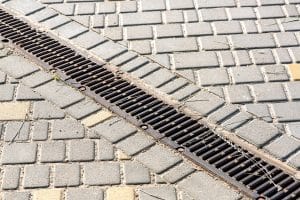The Challenges of Low Head Drainage
 In a properly functioning sprinkler system, where the zone valves are free of issues, the water pressure that drives the system’s heads and rotors will be cut off once the system turns off. The absence of water pressure keeps the heads from spraying, but some water will still remain in the systems pipes. And if that system is installed partially, or completely, on a slope, that remaining water will collect at the lowest point of the system. This is when low head drainage can become an issue.
In a properly functioning sprinkler system, where the zone valves are free of issues, the water pressure that drives the system’s heads and rotors will be cut off once the system turns off. The absence of water pressure keeps the heads from spraying, but some water will still remain in the systems pipes. And if that system is installed partially, or completely, on a slope, that remaining water will collect at the lowest point of the system. This is when low head drainage can become an issue.
Low head drainage occurs when that collected water seeps out of the sprinkler heads, resulting in excess water at the lowest point of your yard. This unwanted water can kill plants, create muddy areas, and create algae build-up on sidewalks and walkways.
To correct low head drainage, the most common solution is to install check valves at each of the sprinkler heads or rotors. Sprinkler check valves help prevent the collected water from draining from the heads. Depending on various factors in your yard and sprinkler system, will help determine whether you’ll need a stand-alone check valve that is installed between the pipe and head, or a head or rotor that has been manufactured with the check valve built in.
While installing a check valve solution is relatively easy, even for a sprinkler expert, it is highly recommended that you also check your system for leaks and verify that the zone valves are properly functioning. It can be easy to focus on the excess water you can see leaking from a sprinkler head and ignore the other potential sources of that same excess water from the parts of your system buried underground. The easiest solution once you have identified that you have a low head drainage issue is schedule an appointment with the experts at Andy’s Sprinkler, Drainage and Lighting
For sprinkler repair services, including low head drainage repairs, please call Andy’s Sprinkler, Drainage & Lighting today.
